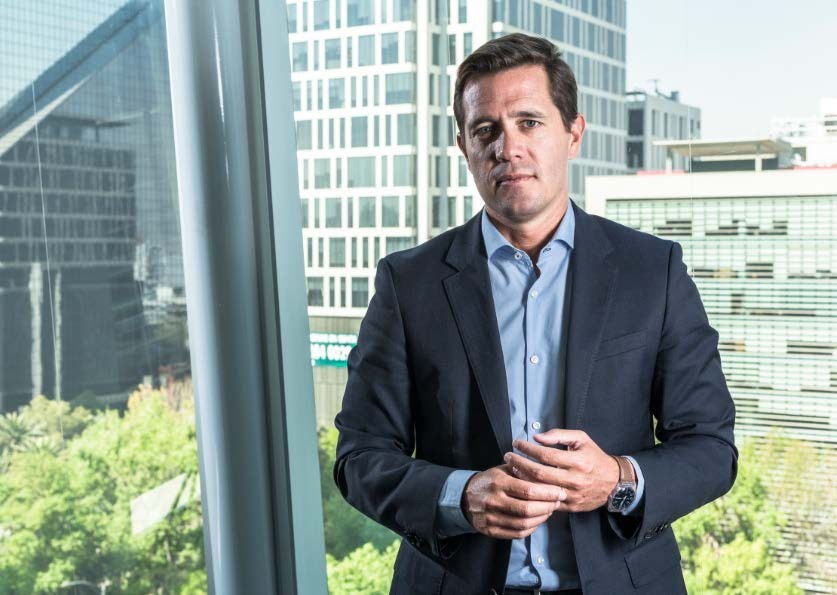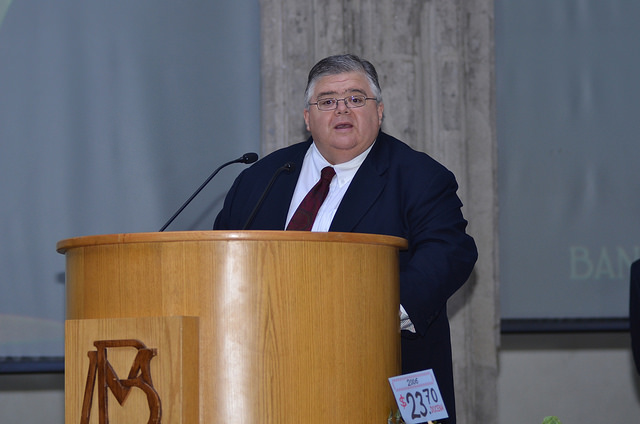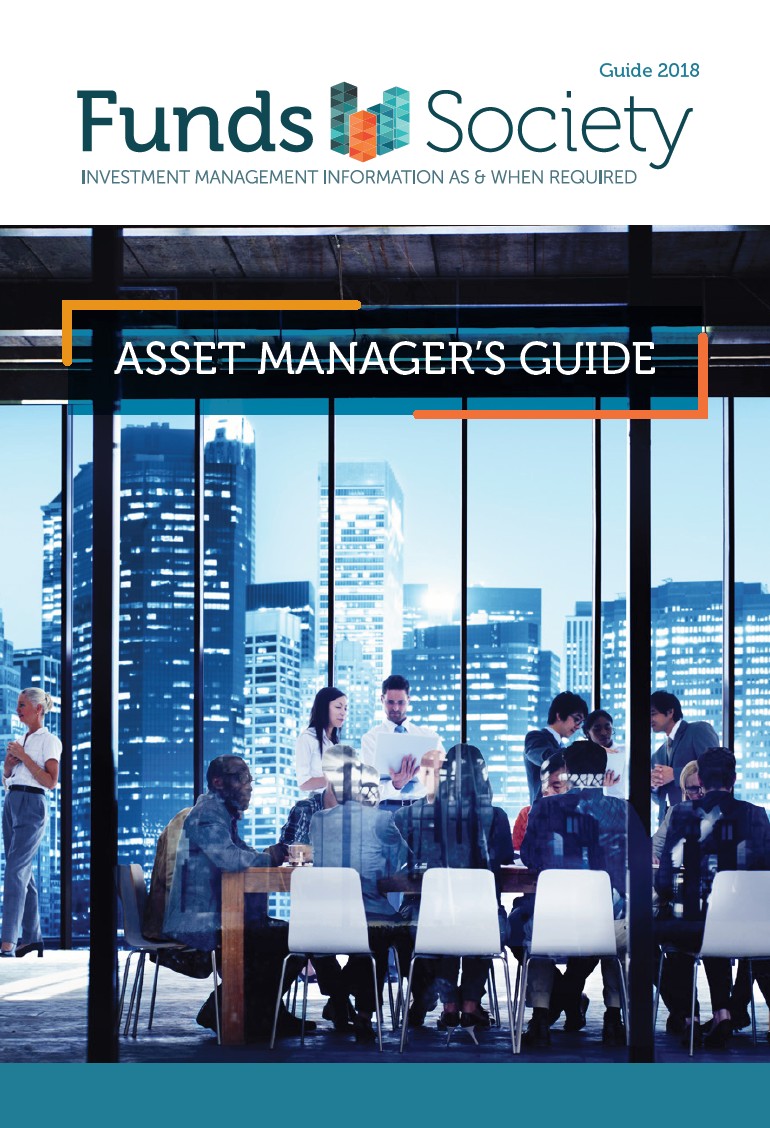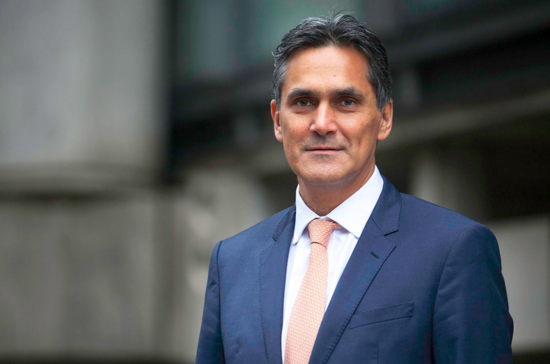On the 1st and 2nd of February, Robeco held its annual ‘2018 Kick-Off Master class Seminar’ at the Four Seasons Hotel in Palm Beach. The meeting was attended by about 130 industry professionals, mainly from the US Offshore business, based in Florida, California, Texas and New York, but also directly from Latin American countries, namely, Colombia, Uruguay, Panama and Peru. A total of 15 companies from the wealth management, private banking, institutional clients, and pension plans sectors participated, including Citibank, UBS, Santander, Morgan Stanley and BBVA.
Welcoming attendees to the event, Jimmy Ly, Head of the Americas Sales team (US Offshore and LatAm), opened the conference. Next, Michael Mullaney, Director of Global Market Research at Boston Partners, reviewed the macroeconomic outlook: “Global economic growth has been very remarkable. The United States has reached its tenth year of recovery since the financial crisis broke out in 2008; however, many countries are still in the early stages of the cycle. That would be the case of emerging markets, which are presented as favorites, and it is probably an intelligent decision to seek exposure to them. According to the OECD, such good growth data had not been seen since 2006, basically all of the 45 countries studied by the OECD are currently undergoing an expansion point. While data from the International Monetary Fund, which studies192 countries, indicates that only four of them anticipate a contraction in 2019. It is the minimum number of countries in anticipation of a recession recorded in a single year,” he said.
According to the expert from Robeco Boston Partners, China and India are the growth giants in global terms. China is decelerating its growth rate, transitioning from being an export-based economy with debt-based investment to a consumer economy, taking a more western profile. “We will not see a growth of 9% or 10% like that of a few years ago, but it will go from the present 6.5% to 5% in the coming years, being much more stable. However, growth in India is accelerating and will most likely become the next biggest contributor to GDP growth,” he said.
Another indicator which points to good growth prospects is the Purchasing Managers Index (PMIs), which is somewhat below 50, a value that determines if an economy is contracting, only in Indonesia and South Korea, showing an extraordinary strength globally in terms of production. Likewise, the PMI service index and the Citigroup economic surprise index indicate that the global economy as a whole shows strong signs of recovery, expecting an overall growth of GDP between 3.5% and 4%.
In turn, the withdrawal of accommodative economic policy programs could be a risk factor for equity markets, the rise of which benefited in recent years from the excess liquidity injected by central banks. “The real interest rate of federal funds globally is currently 30 basis points. The United States has never entered recession with a real interest rate of federal funds at levels near or below zero, which is exactly where we are now. The prospects for recession are very low,” he said.
Meanwhile, inflation, which continues at very benign levels, has risen slightly with the rise in oil prices. On the other hand, if we take core inflation into account, discounting food and energy prices, it is still below the 2% that most central banks usually aim for to fight against deflation, a problem that has historically remained.
Regarding salaries and employment levels, the overall situation has improved markedly, from 9% unemployment in 2009 to 5.5% today. Despite this, salaries have been very poor. “In the United States there are three reasons why wages have not experienced a significant rise. First, the most senior workers have retired and have been replaced by younger workers with lower wages. Secondly, globalization has caused companies to look for production centers with lower costs, causing something similar to the “Amazon effect”, which seeks a low-cost solution. Finally, technology is replacing many of the tasks, reducing the cost structure for many countries. In particular, Japan is among the most advanced economies when it comes to integrating robotics into its economy,” he added.
Finally, referring to the fall of the dollar, Mullaney mentioned the purchasing power parity index, according to which the Euro remains relatively cheap with respect to the dollar, and the current account deficit, which in the United States is at a -3% and in Europe at + 4%. In addition, Europe also shows a better fiscal balance than the United States, reasons that favor a weaker dollar.
Subordinated debt of financial institutions
Next, David Hawa, Client Portfolio Manager, explained the reasons why it may be a good time to invest in subordinated debt of financial institutions, the so-called contingent convertible bonds (CoCo’s), as their conversion is subject to certain conditions established at the time of issue and in relation to certain levels of capital. “The economic outlook in Europe is more favorable, benefiting from the solid growth enjoyed by the global economy. Growth in Europe remains strong and enjoys a broad base, while the credit cycle in the United States is much more mature. Against this backdrop, European financial companies continue to offer value. Credit spreads are not as generous as they used to be, but the valuations of financial companies are still attractive,” he said.
In that regard, the strategy dedicated to financial institutions’ bonds has the potential to achieve attractive spreads with an investment grade issuer risk. Spreads of subordinated financial debt are usually attractive compared to the rest of corporate debt, including high-yield debt. “Issuers of financial bonds tend to be predominantly corporate issuers with a high-grade rating within the investment grade. In addition, this type of asset serves as implicit hedging against rising interest rates, since it has a very low or low correlation with US Treasury bonds,” said Hawa.
During his presentation, he pointed out the capabilities of the Robeco Credit Investment team: “Since the 70s, Robeco has a specialized credit team, in which each member has an average experience of 17 years and includes about 4 financial analysts working on a full-time basis. They also differentiate between the responsibilities of portfolio managers and those of the credit analysts; displaying a profound knowledge of the financial sector and equity securities. They select the best subordinated bonds for each category, with a higher risk-return binomial and use an internally developed risk model to monitor both the portfolio and the issuer risk”.
Trends Investment
At the following lecture, dedicated to investing in trends, Ed Verstappen, Client Portfolio Manager, reviewed the performance of growth stocks, after a year in which the FANG shares (Facebook, Amazon, Netflix and Google), together with their Eastern version, the BAT (Baidu, Alibaba and Tencent) have dominated the markets.
“The ‘winner-takes-it-all’ effect, in which a group of companies generate most of the market’s profits, is becoming stronger, accelerating even profit growth. Facebook generated an increase of 50% in revenue for 18 consecutive quarters. While Netflix obtained growth of 35% in more than 20 quarters. For its part, Google achieved 31 quarters with organic revenue growth of 20%. And, Amazon reached 60 quarters with 20% growth in the retail sector. It is estimated that, by 2025, it will be the first US retail company to sell $ 1 trillion annually in products and services, when the company reaches 30 years’ history. Finally, the AppStore achieved a new record on New Year’s Day, when users made purchases worth 300 million dollars in purchases,” commented Verstappen.
To avoid taking unnecessary risks, the Global Consumer Trends strategy team evaluates risks with a strategic approach and considers the impact of regulation and the increase in capital intensity. In addition, they continue to reduce exposure to major US technology firms to start betting on equivalent names in China.
“This strategy identifies secular global trends with strong growth from the consumer’s perspective, such as the digital consumer, the emerging consumer, and the consolidated brands. Having a preference for investment in structural winners within each industry, with a focus on the 50-70 most attractive stocks, which offer higher quality and a higher growth profile,” he said.
Verstappen was also optimistic about the state of the economy: “The market is anticipating an improvement. The increase in consumer spending should benefit from low unemployment, higher wages, and high consumer confidence. It is expected that also in 2018, the markets will be driven by solid growth. The fundamental perspectives for large digital platforms (Google, Facebook and Amazon … etc.), are still very good. Emerging market shares can benefit from the prospects of improving global growth,” he added.
Robeco has specialized in analyzing trends, which are understood to be a disruptive change that displaces the previous ‘status-quo’ and with a visible effect in the long term. Thus, a new trend would result in new challenges for players already present and opportunities for challengers.
This global management company of Dutch origin offers strategies based on the analysis of trends, from the consumer angle, from the financial angle, from the production side, and from a total perspective: “It is an attempt to anticipate the future. We believe in the power of disruption from the demographic, technological and regulatory changes. It is a commitment to the long term, because short-term horizons lead to a lower estimate of secular growth trends creating high-conviction portfolios that are agnostic with respect to their benchmark,” he explained.
Concluding the morning conferences, Henk Grootveld, Managing Director of Trends Investment, explained the scope of the digitization of the financial sector. “In the next 10 years, payments made online will be adopted mostly, cash will become an exception. The digitization of the financial sector will allow 2 billion people to manage their assets; both China and India will establish themselves as the biggest players in FinTech, surpassing the rest of the world combined. Failure in the cyber security issue in the financial world means being out of the FinTech business,” he concluded.
















